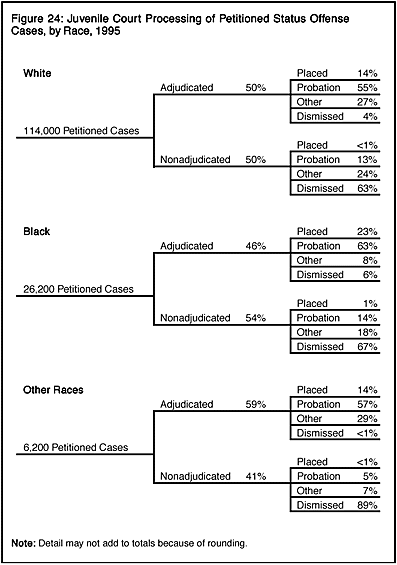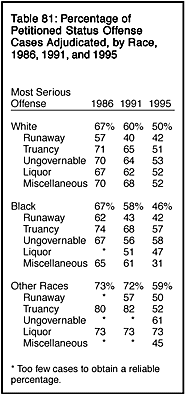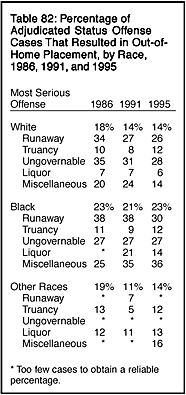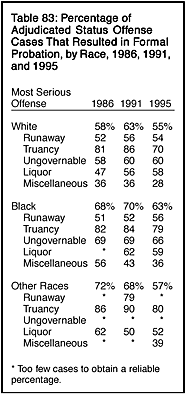|
Race Judicial Decision and Disposition  When the most serious charge in a case was truancy, cases involving black youth were more likely to be adjudicated (57%) than those involving white youth (51%) or youth of other races (52%) (table 81). In cases involving status liquor law violations, the likelihood of adjudication for cases involving youth of other races was greater than those involving black or white youth. Once adjudicated, status offense cases involving black youth were more likely to result in out-of-home placement than cases involving white youth or youth of other races. In 1995, 23% of adjudicated status offense cases involving black youth resulted in out-of-home placement compared with 14% of cases involving white youth and 14% of those involving youth of other races (table 82). There was little variation across race in the use of out-of-home placement for different types of cases. Among adjudicated cases involving charges of truancy, white youth, black youth, and youth of other races were equally likely to be placed out of the home (12%). The likelihood of out-of-home placement was about the same among adjudicated ungovernability cases involving white youth (28%) as those involving black youth (27%). Between 1986 and 1995, the probability of out-of-home placement decreased for white youth and for youth of other races; the probability remained the same for black youth (23%).
In 1995, probation was the most restrictive disposition used in 55% of status offense cases involving white youth, 63% of cases involving black youth, and 57% of those involving youth of other races (table 83). In all racial groups, the status offense cases most likely to result in formal probation were those involving charges of truancy. Between 1986 and 1995, the lkelihood of formal probation decreased slightly for cases involving white youth (from 58% to 55%) and black youth (from 68% to 63%), and decreased substantially for cases involving youth of other races (from 72% to 57%).
|


